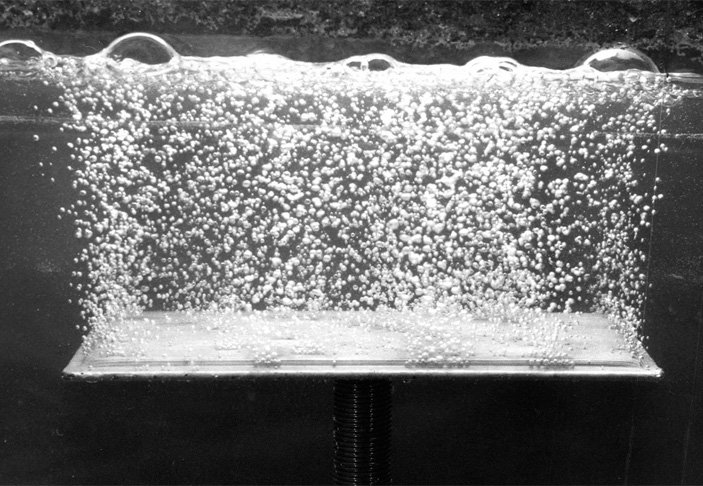Gas vs. Liquid Filtration: Techniques and Capabilities
From preventing harmful debris from entering your car’s transmission to removing unwanted particles when purifying air, the process of filtration comes down to two forms: gas filtration and liquid filtration. That said, as you fluctuate between the two methods, it’s essential to understand that gas and liquid filtration are carried out differently.
Regardless of what your filtering, you ultimately have one goal in mind: particle separation. Achieving desirable results requires you to implement a process that matches the form of filtration you are conducting.
That said, how do the methods used to carry out gas filtration and liquid filtration differ?
W.S. Tyler has helped customers implement high-performing filter mesh for over 150 years and is here to help you understand all aspects of filtration.
To that end, this article provides insight into:
- What filtration is
- What gas filtration is
- The methods used to facilitate gas filtration
- What liquid filtration is
- The methods used to facilitate liquid filtration
- How pleated wire mesh filters affect the filtration process
What Is Filtration?
Filtration is simply the act of passing a liquid/gas through a filter media, such as woven wire mesh, to remove solids/other substances. There are innumerable applications and methods used to filter many different substances.
As with any process, the particle size and ambient conditions will determine what method you use to filter any specific product. This article was written to review some of the basics in regard to filtering gasses and liquids.
Gas Filtration
Gas filtration is the process in which contaminant particles are removed from a gas or vapor. There are several ways to remove unwanted solid particles from gas.
This includes the Brownian motion method, electrostatic, locking effect, inertial, and sieving effect.
Brownian Motion (Diffusion)
The collision of particles within the gas stream and atoms on a molecular level, causing random particle movements. These random movements force the particles to strike the filter media, resulting in a filtered gas stream.
*Used for fine particles
Electrostatic
Electrostatic filters will attract charged particles that pass by them based on their electronic charge. Thus filtering them from the gas.
*Used for fine particles
Locking Effect
Particles in the gas that pass through the filter become trapped due to the filter geometry.
*Used for larger particles
Inertial
Particles become trapped in the filter media due to the momentum flow of the gas through the filter and are locked.
*Used for larger particles
Sieve Affect
Particles larger than the filter aperture are retained on the surface of the filter, creating a filter cake.
*Used for larger particles
Liquid Filtration
Liquid filtration is the process in which contaminants are separated from a given liquid to either purify the liquid or extract the solids to form a filter cake. Of all the methods mentioned above, only the sieving effect applies to liquid filtration.
Sieving Affect
A liquid is projected through a screen, and the impurities or solid particles are collected on the filter screen. Thus either the filtrate or the filter cake can be retained depending on the need.
How Do Pleated Wire Mesh Filters Affect the Filtration Process?
Pleating is often used in the design of filter media to increase its surface area and thus the amount of use you can get out of a single filter. With this being said, if your filtration process aims to retain the filter cake, using a pleated filter can complicate the process of collecting that filter cake.
For an in-depth overview of pleated wire mesh, read the article below:
Deliver Optimal Filtration With the Right Mesh Weave
Filtration is the process in which a substance is passed through a filter media to separate specific particles. That said, gas filtration and liquid filtration stand as the two predominant forms of filtration.
Now, just as using the right method to facilitate your filtration process is essential to yielding desirable results, you must identify a suitable mesh weave pattern to construct your mesh filter. This will ensure your filter delivers efficient throughput and durability.
Having helped customers leverage the capabilities of woven wire mesh filters for over 150 years, W.S. Tyler is here to ensure your wire mesh filters yield optimal results.
Read the following article to gain a better understanding of what weave pattern you should use to construct your mesh filters:
About Sam Badger
Sam has been a part of the W.S. Tyler family for three years and is currently a sales manager, overseeing our fabricated parts and customized filters. To help deliver best-in-class solutions, Sam works to bridge the gap between customers, both new and existing, and our engineering team. Additionally, Sam provides on-site servicing of the ALPINE Air Jet Sieve e200 LS, striving to learn your particle analysis operation to resolve any issues you encounter and ensure your equipment continues to produce accurate and repeatable results.



